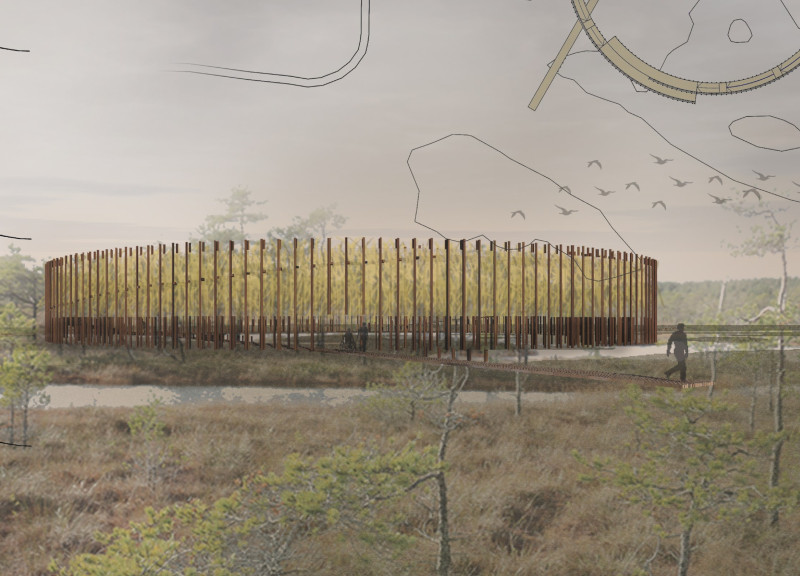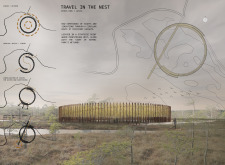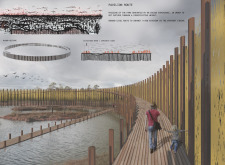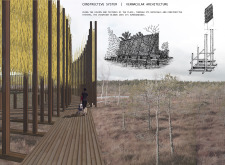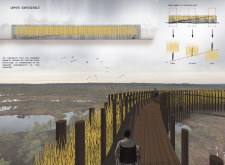5 key facts about this project
Unique Design Approaches
One distinctive aspect of this project is the emphasis on a circular routing system. This design choice facilitates a continuous flow of movement, encouraging exploration and engagement without the disruption of linear paths. The circular configuration also promotes a sense of unity with the environment, allowing visitors to experience the landscape fully.
The use of multiple elevations throughout the pathway is another unique feature. By integrating various heights, the structure provides differentiated views and observations of the wetland ecosystem. This approach enhances the visual experience while minimizing ecological impact by keeping structures elevated above sensitive areas.
Material selection plays a critical role in the project’s execution. The primary materials include wood, metal, and glass. Wood is extensively used in the structure, echoing the natural context and providing warmth. Metal serves as structural support, ensuring durability. Glass elements enhance transparency and connectivity with the surroundings, maximizing natural light and maintaining visual ties to the environment.
Environmental Responsiveness and Accessibility
The project is designed with ecological sensitivity in mind. Elevated walkways minimize ground disturbance, allowing for the protection of the wetland habitat. The pathways are designed for user accessibility, ensuring that diverse populations can engage with the space comfortably. This focus on inclusivity underscores the project's commitment to community interaction while respecting ecological dynamics.
Through these design strategies, "Travel in the Nest" exemplifies a methodical approach to integrating architectural form with functional purpose and environmental stewardship. For further insights, including architectural plans and sections that detail the design's execution, readers are encouraged to explore the project presentation for a comprehensive understanding of its technical aspects and architectural ideas.


